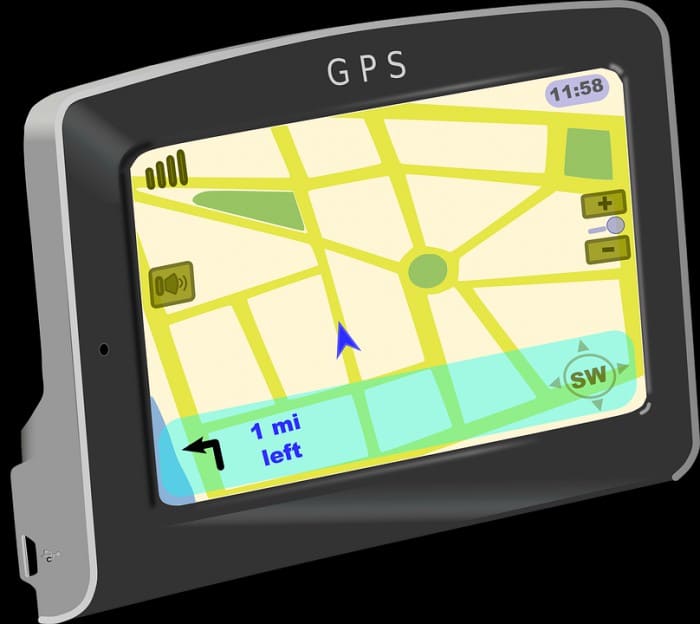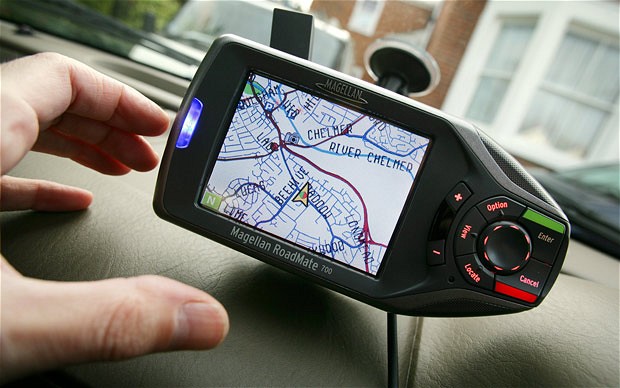
Before going into the wide range of GPS tracking devices available today, it will be relevant to know what exactly Global Positioning System (GPS) is and the technicalities behind the functioning of the trackers. A GPS tracking unit is a device placed in a vehicle or carried by an individual to know the exact location on earth. This location data can either be stored in the device or transmitted to another point or a central database or a computer via a cellular radio or satellite modem in-built into the unit. Thus the location is displayed on a map, either in real time or whenever the data so transmitted is analysed. All this is done through a GPS tracking software. Data tracking can also be done through smart phones that are run on advanced technologies.
How does GPS work
There are basically three components that make a GPS network tick. The first is the solar powered group of 24 and 32 satellites that are in geo stationery orbit at selected places almost 20,000 km above the earth. Next are the tracking and monitoring stations that are located at Hawaii, Diego Garcia in the Indian Ocean, Ascension Islands and Kwajalein. The last is a GPS tracking device that receives signals from the satellites and determines its precise position on earth.
A tracker picks up signals from at least four satellites to fix its position. The microwave signals are processed by the computer in the tracker which works out the exact distance from each of the satellites. The data is then triangulated and the location of the tracker is computed down to an accuracy level of a few meters. Advancements in this field have made it possible for trackers to pinpoint the distance based on the signals from three satellites instead of the standard four. This is called the trilateation process.
Types of GPS trackers
A GPS tracker is essentially a module that receives the signal from a GPS satellite and calculates the coordinates. It has to have a large memory to store the coordinates. Based on their usage and specific requirements, some trackers even contain a GSM/GRPS modem to transmit data to control rooms via SMS or IP packets. Hence a person looking for GPS tracking devices for sale will be literally spoilt for choice.
Here are a few types of tracking devices that are more commonly used.
- Data Pullers – These are also referred to as GPS transponders, are always on and can be connected to for information whenever required. This is very useful in cases where the location of the unit to which the tracker is connected needs to be known occasionally. An example is freight or goods that might be stolen and items in transit where knowing when they reach a destination is important. These devices also do not have a stable source of energy which can enable them send a constant stream of data. In data pullers, it is enough to know the position of the asset only sporadically.
- Data Loggers – A GPS logger in this case simply has to enter the position of the device in its internal memory at regular intervals. Such GPS devices usually have an internal flash memory card or a memory slot and an USB port. Through these memory storage points it is possible to download the track log data which can then be analysed by a computer. An example of this is geo-tagged photos where cameras with built-in GPS trackers provide an accurate location of where the snap was taken. Data loggers can range from expensive trackers to cheap GPS asset tracking devices that are quite effective in spite of not having the advanced features of their costlier counterparts.

- Data Pushers – This is the type of device that is most commonly used and used in asset tracking, personal tracking and vehicle tracking. The devices “push” data covering various operational aspect of the asset being tracked at regular intervals to the monitoring authority or a pre-determined server that can analyse the data instantly. Such a unit contains a GPS navigation device and a mobile phone connected to the same battery for power. The mobile phone sends text messages at regular intervals to the GPS receiver.
Fleet managers and owners are increasingly using such devices, not only to track the location of their vehicles but also for maintenance purposes also. Such trackers transmit data on fuel consumption, upcoming maintenance and servicing, whether the vehicles have gone off their designated routes or been in an accident on remote corners of a highway. Advanced trackers also monitor fuel consumption and driving patterns such as hard braking or sudden acceleration.
- Personal GPS – There are almost limitless uses of GPS trackers in personal applications. Persons subject to restraining orders by court or out on bail may have to wear a device around their ankle so that law enforcement authorities can track them at all times. Private investigators use trackers for surveillance or espionage by surreptitiously planting such devices in vehicles or on a person. Parents can track their little kids and know where they are going. The same goes for the elderly too whose movements have to be monitored. Such devices often have one way or two way communication option in-built in them. Some organisations even use GPS trackers to monitor movement of their employees, especially those out on field work. GPS tracking devices are also used on athletes and cyclists engaged in cross country championships to know if any shortcuts or undue advantages have been taken by them.
- Covert GPS Trackers – These are sort of concealed in assets that an owner wants to protect from theft. They are designed to look like everyday objects. An example is GPS trackers for power tool protection which can be concealed in the tool boxes and traced if a theft occurs.
There are multiple uses for GPS trackers far beyond the type and utilities given here. GPS technology has been a game changer of how the world and people can track and protect what is important and crucial for them.
